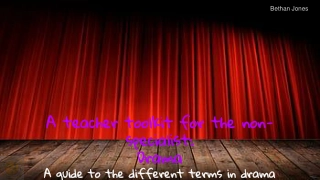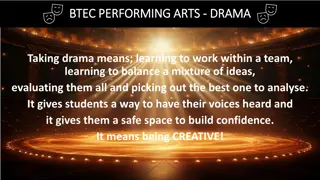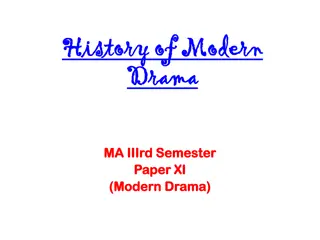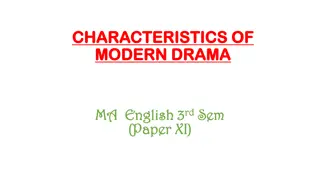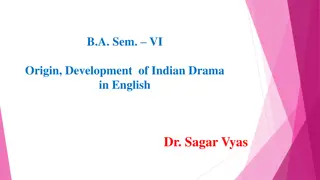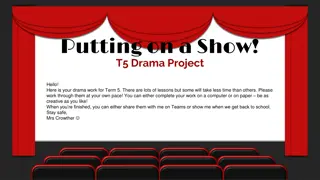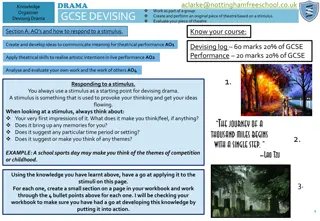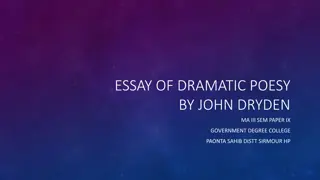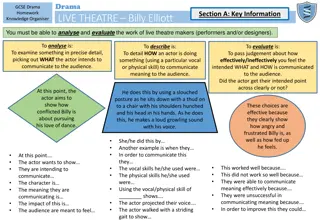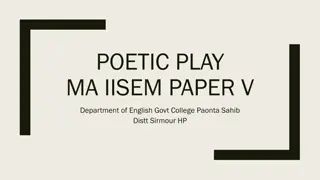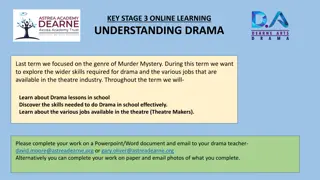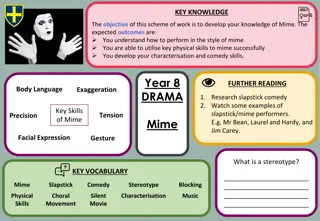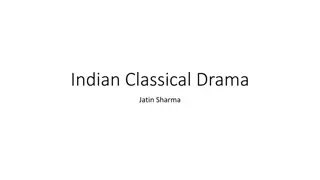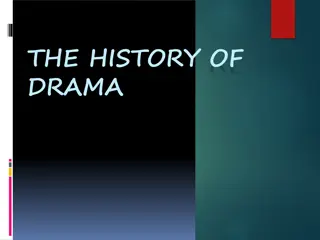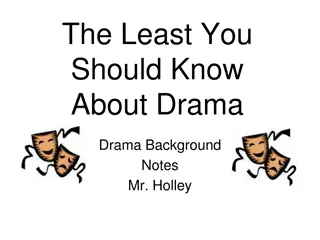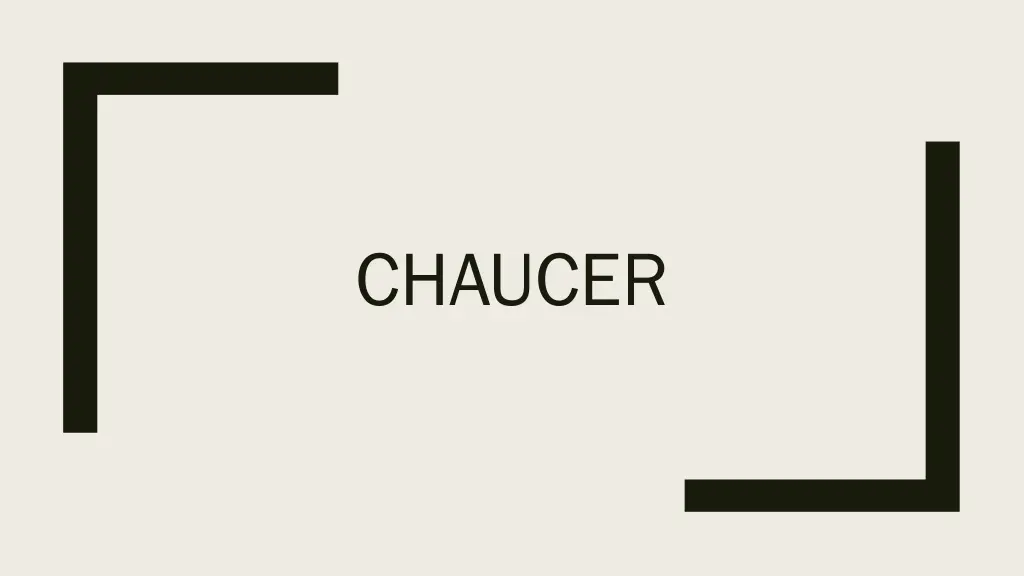
Theatre Evolution in Elizabethan Era
Explore the transition of theatre from religious to secular themes in the Elizabethan era, with the emergence of tragedy, tragic heroes, and the use of iambic pentameter. Discover the evolution of plays, the shift in dramatic focus, and the impact on storytelling during this pivotal period in theatrical history.
Download Presentation

Please find below an Image/Link to download the presentation.
The content on the website is provided AS IS for your information and personal use only. It may not be sold, licensed, or shared on other websites without obtaining consent from the author. If you encounter any issues during the download, it is possible that the publisher has removed the file from their server.
You are allowed to download the files provided on this website for personal or commercial use, subject to the condition that they are used lawfully. All files are the property of their respective owners.
The content on the website is provided AS IS for your information and personal use only. It may not be sold, licensed, or shared on other websites without obtaining consent from the author.
E N D
Presentation Transcript
Elizabethan DramaWhat is a tragedy? Why do people write/watch tragedies?
2 A Movement from Religious to Secular within the TheatrePreviously, most of the drama done was in the church in order to help educate the people about their religion Cycle plays were used to reenact history Creation by God Humans fall to Satan Life during the Old Testament times Redemption by Christ Final judgment at the end of the world In the 14th century the plays began to move out into the town courtyards where they began to take on a more secular ton
What is going on with Theatre?Miracle and mystery plays Used to teach stories from the Bible Moralities Used to show people how they should live and die Interlude One-act plays Some used the framework of the Moralities Other were written for entertainment and could be quite farcical
4 Writing and Developing PlaysScholars and writers were viewing the world with a more humanistic view (they were no longer focusing all their attention on studying of the divine) Though the views were more humanistic medieval practices and conventions dominated English theatre through most of the 16th century Playwrights were constantly intertwining secular and ecclesiastical stories Mixed both comic and serious Many bloody plots were used during this time King Henry VIII created the Church of England and the secular writing was more common 5 Tragedy and Tragic HeroesElizabethan Tragedy- a dramatic form in which a character of high rank is involved in a struggle that ends in disaster Elizabethan Tragic Hero- main character with a tragic flaw (usually excessive ambition, pride, jealousy, or some other human frailtyHow is this different than a Greek TH?) Catharsis purging of emotion, usually pity or fear Fatal Flaw (Hamartia or Tragic Flaw) a fatal weakness in the character that causes this person to become enmeshed in events that lead to his or her downfall Hubris excessive pride or self-confidence 6 MeterIambic Pentameter-five sets of an unstressed syllable followed by a stressed syllable (dun-DUN) (Shall I comPARE thee TO a SUMmers DAY?) Blank Verse- unrhymed poetry written in iambic pentameter. Usually spoken by the noble characters, or when someone is being very serious. 7 Words, Words, WordsSoliloquy-longer speech in which a characterusually alone on stagespeaks as if to
Writing and Developing PlaysScholars and writers were viewing the world with a more humanistic view (they were no longer focusing all their attention on studying of the divine) Though the views were more humanistic medieval practices and conventions dominated English theatre through most of the 16th century Playwrights were constantly intertwining secular and ecclesiastical stories Mixed both comic and serious Many bloody plots were used during this time King Henry VIII created the Church of England and
Tragedy and Tragic HeroesElizabethan Tragedy- a dramatic form in which a character of high rank is involved in a struggle that ends in disaster Elizabethan Tragic Hero- main character with a tragic flaw (usually excessive ambition, pride, jealousy, or some other human frailtyHow is this different than a Greek TH?) Catharsis purging of emotion, usually pity or fear Fatal Flaw (Hamartia or Tragic Flaw) a fatal weakness in the character that causes this person to become enmeshed in events that lead to his or her downfall Hubris excessive pride or self-confidence
Shakespeare on StagePublic theater roofless courtyards (daylight only) Globe Theater (reconstructed) No scenery barest minimum of furniture Described in dialogue Elaborate costumes Scenes occurred rapidly colorful, fast-paced about two hours

